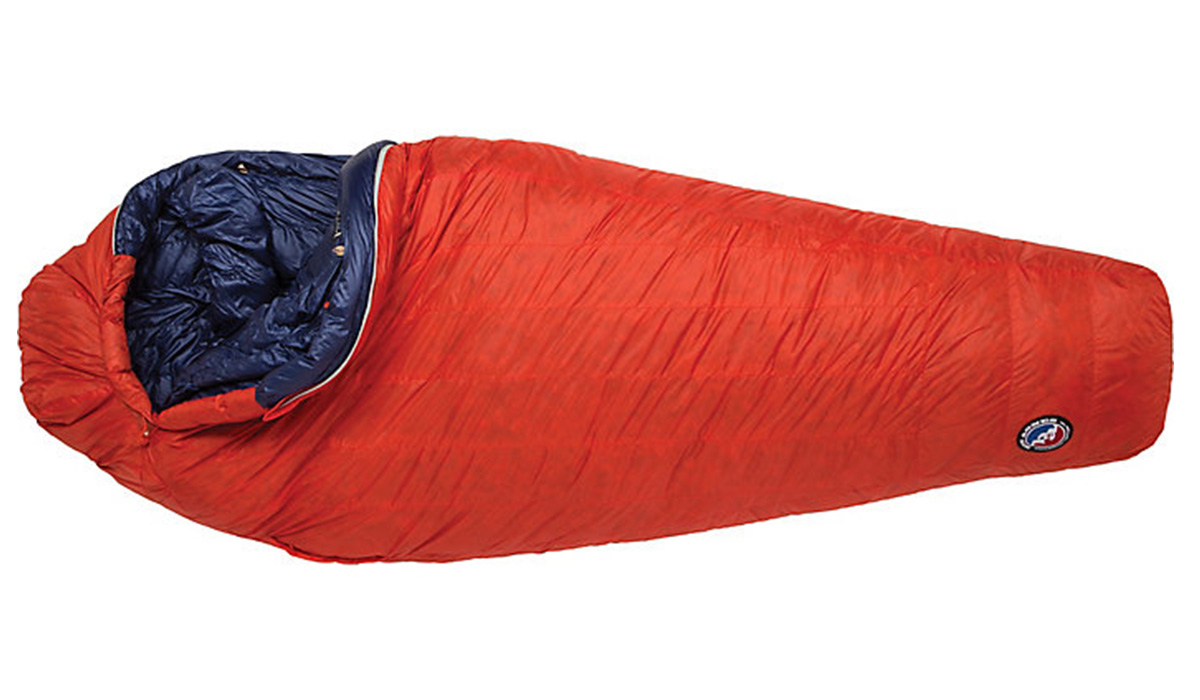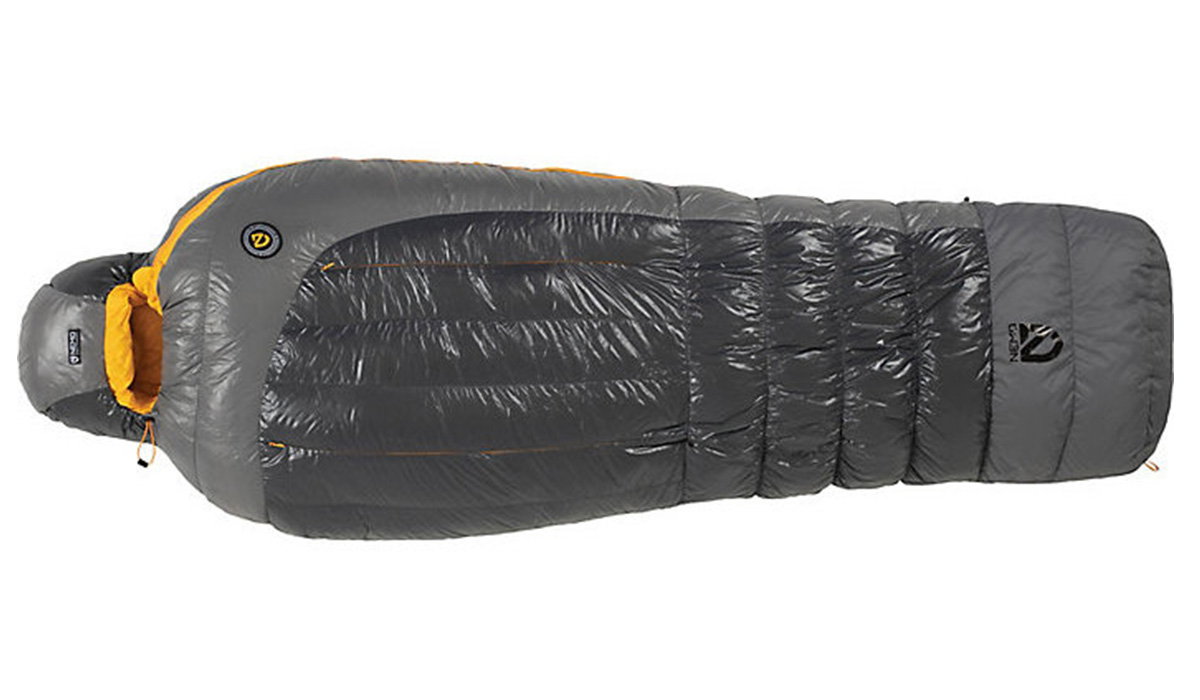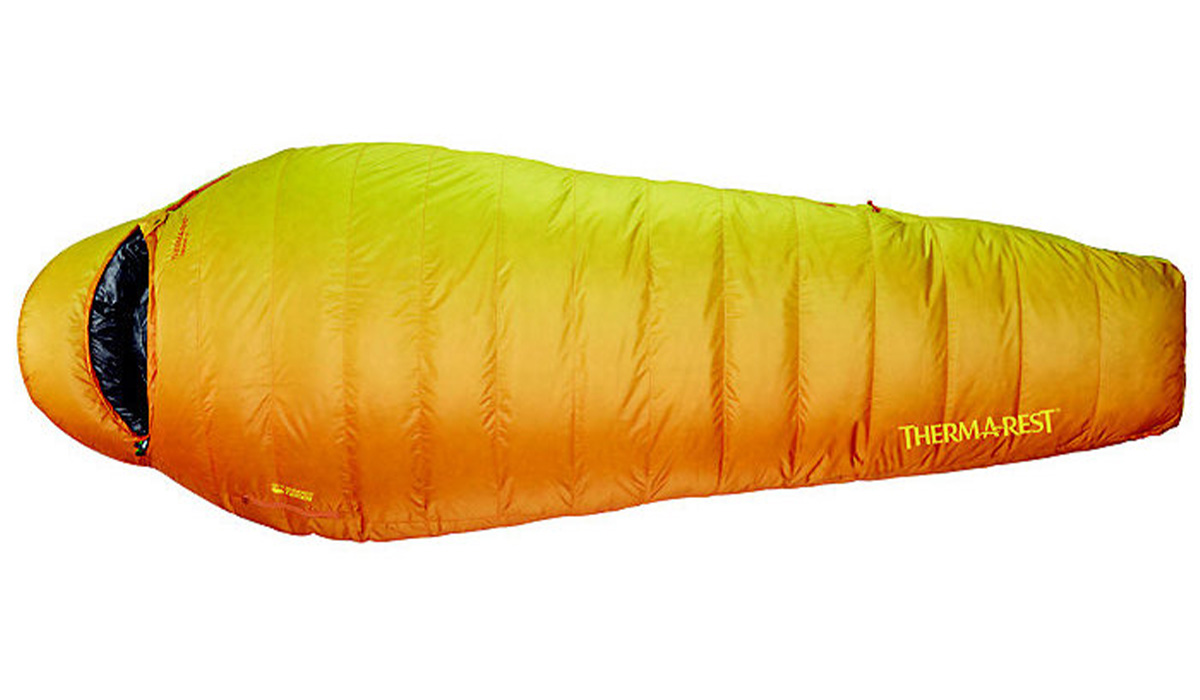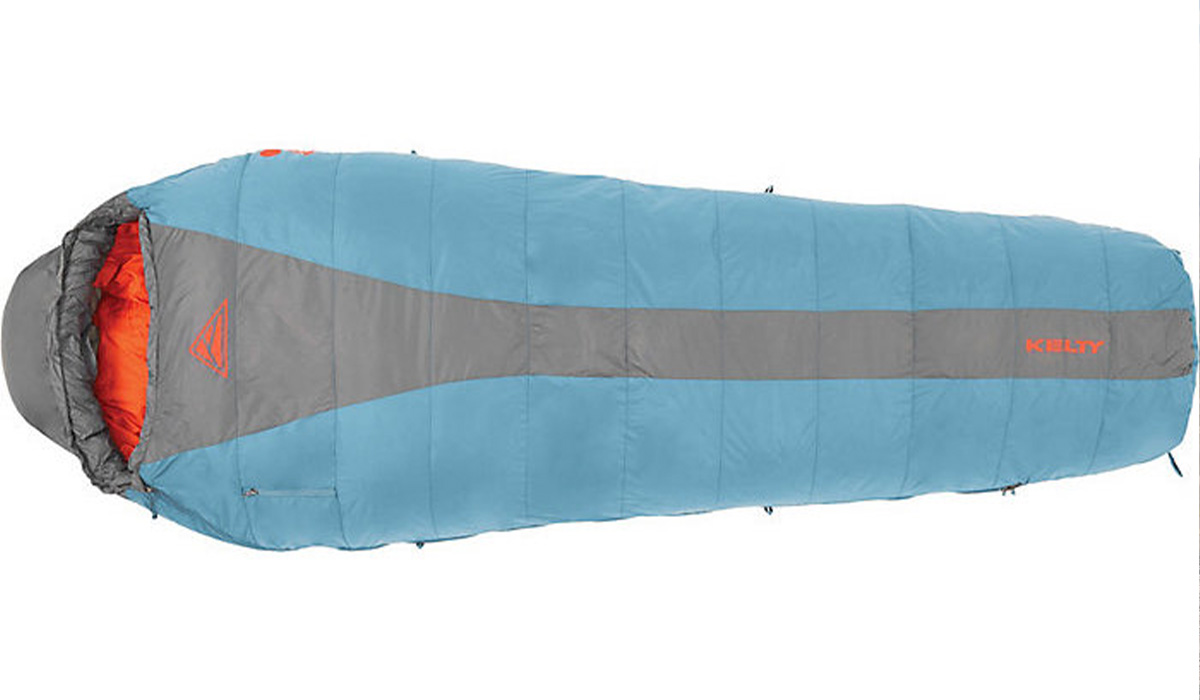Derrek Sigler 03.01.21
Camping is as much a national pastime as baseball or hockey. It is one of the very best ways to get out and enjoy the great outdoors. While an RV does make for a comfortable home away from home, there is nothing quite like camping out in a tent. If you’re a serious tent camper, or someone just starting out, one of the vital pieces of equipment past the tent itself is the sleeping bag.The sleeping bag determines your comfort level while you catch some zzz’s under the stars. The rating system for sleeping bags goes by temperature rating. The colder the weather, the more intense bag you need to stay warm and comfortable. The best sleeping bags use high-tech materials to keep your body heat where it needs to be, while keeping the bulk and weight down, so the bag is still transportable. Here’s our picks for some of the best sleeping bags for year round camping by temperature range. Happy camping!
Cover Image: Shutterstock/Lande
1. Big Agnes Cinnabar -40 Degree
Planning to climb an 8,000 meter peak? How about trekking across Antarctica? These are things the Big Agnes Cinnabar -40 sleeping bag has been used for. This is one extreme bag that can handle the most extreme cold. You could even use it to tent camp in North Dakota in February! This bag is filled with 850 Fill DownTek that repels water while maintaining insulating value-bluesign certified PFOA and PFOS free water repellent chemistry. It has a baffle shape that maximizes loft while keeping liner and heat close to the body. It was designed to allow you to change cloths inside the bag, and layer up to maximize the experience and warmth. This is an extreme bag for extreme conditions, so you seriously get what you pay for.
Pros/Extreme warmth for extreme cold
Cons/The price matches the conditions, so this bag is for a select few
Bottom Line/If you’re going into the deepest of deep freezes, this is what will keep you going
2. NEMO Sonic -20 Degree
The Nemo Sonic bag packs a lot of cool features into a great way to keep you warm. It is rated for -20 degrees and is insulated with 850 Fill Power down that Nemo sources responsibly. The foot box area is completely waterproof and breathable to keep your feet warm and dry. And like another famous Nemo, this bag has gills, although these gills are designed to keep warmth in the bag while you sleep, but allow moisture to escape. The bag is a tighter mummy fit, but it stretches with you to allow for side sleeping and other movement. This is another serious cold-weather bag, but the pricing is easier to take.
Pros/A very warm, yet breathable bag
Cons/It may be harder to get dressed inside the bag
Bottom Line/Extreme warmth at a lower cost
3. Therm-a-Rest Oberon 0
Therm-a-Rest is widely known first for their amazing, compact camping mats that add a layer of comfort and warm between you and the ground. Their sleeping bags are also amongst the best available. The Oberon is a zero-degree rated bag that comes in three sizes to best fit the camper. It uses 800 fill Nikwax Hydrophobic Down, for warmth without the weight. It uses what Therm-a-Rest calls the Toe-asis Footbox to help keep your feet warm, one of the areas you lose heat the quickest. Another feature that is great is this bag absorbs much less moisture than others, allowing it to transfer away from your body, but allowing the bag to dry out faster than many others.
Pros/Quick drying and lightweight warmth
Cons/Only a zero-degree bag
Bottom Line/Comfortable and warm without the weight
4. Kelty Cosmic 20
One of the cool things about camping out is what you can see in the night sky when you are away from the lights of civilization. One of my favorite things is seeing the visible parts of the Milky Way. It’s a cool, cosmic treat for the adventurous type. And a great way to enjoy it is with a Kelty sleeping bag. Kelty’s Cosmic 20 is a three-season camping and backpacking bag that is packed with 600-fill DriDown. This bag will maintain its loft and dry quicker than traditional down bags if exposed to wet conditions. The nylon taffeta fabric is engineered for buttery softness, and the comfort hood, draft collar, and zipper tube seal in precious warmth when the temperature dips.
Pros/A seriously sweet and roomy bag for the price
Cons/Only one size option, so if it doesn’t fit you…
Bottom Line/A great, affordable 20-degree bag for enjoying the outdoors
5. Klymit KSB 35
When the weather warms up, and you feel the draw to the outdoors, the Klymit KSB 35 sleeping bag is a great option. It has 650 fill power down top and synthetic fill bottom provides exceptional warmth-to-weight ratio, making it a great bag to carry in to more remote camping sites. It compresses way down into a small stuff sack, and won’t take up much room in your pack. The light weight will also appeal to your back. This is a roomy bag that stretches and moves with you. It has a nice foot area that breaths with your feet for comfort.
Pros/Lightweight and extremely packable
Cons/Only one size option
Bottom Line/An economical warm-weather bag for serious camping
Picking out the right sleeping bag
When it comes to picking out the right sleeping bag, you need to look at just how you plan to use the bag and when, for starters. For backpacking, balancing weight and compressibility with the level of warmth is vital. This is why those temperature ratings are important. A bag rated for 20 degrees is not going to cut it when it’s -20 degrees.
You also need to look at dimensions, especially if you’re not going to fit into those average-size body types. The fill used to insulate most bags requires air to work properly. If you’re a pushing the limits, you need to look for a bigger or taller bag to give you the space. It also makes things much more comfortable.
Insulation types
There are two basic types of insulation used in sleeping bags. Almost every bag has either natural goose-down or some form of synthetic equivalent. Down is relatively lightweight, compresses easily and keeps you very warm, making it a favorite among some backpack campers. Its drawback is that it loses its ability to insulate when it gets wet, and it doesn’t dry very quickly.
Synthetic fill, typically some form of polyester, dries quickly and keeps you warm even if it’s wet. It’s also extremely durable and costs substantially less than goose-down.
The importance of layering
Most of the bags in this list are rated based on normal attire for the temperature rating. If you’re buying a -40 bag, they expect you to be wearing layers to stay warm. Remember, you can always shed layers or add layers. Several of the bags in this list are designed to allow you to get dressed right in the bag, which can be very important to your comfort level for the day.
What is the best filling for a sleeping bag?
Most bags are filled with some form of down, be it a natural feather down, or a synthetic variation that saves weight
What temperature sleeping bag do I need?
Think of the bags rating as the lowest you should consider when fully dressed. I wouldn’t recommend a zero-degree bag if you’re planning to spend a lot of time in zero-degree weather. Go with a warmer bag than you think you’d need and you’ll be happier.
We are committed to finding, researching, and recommending the best products. We earn commissions from purchases you make using the retail links in our product reviews. Learn more about how this works.





